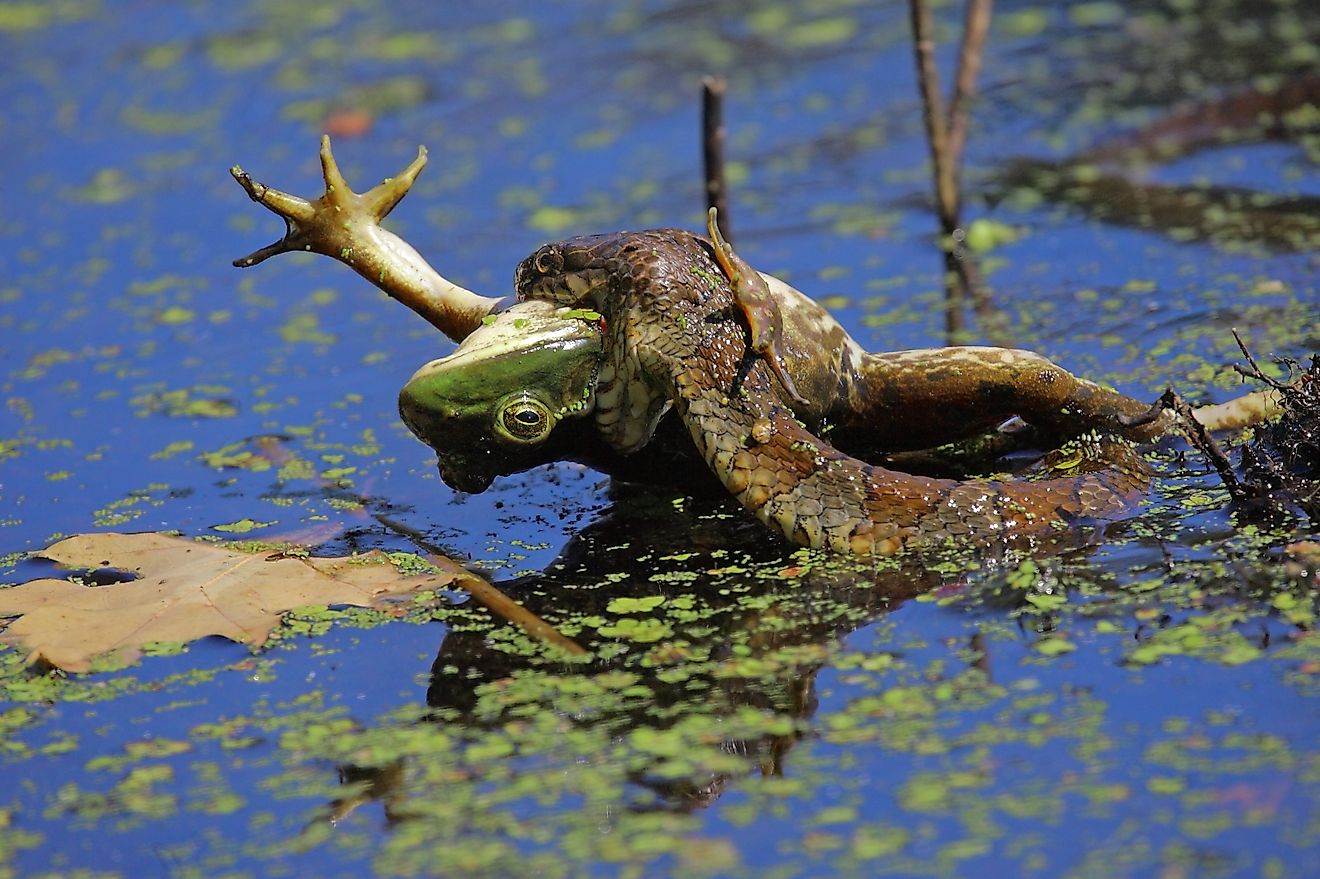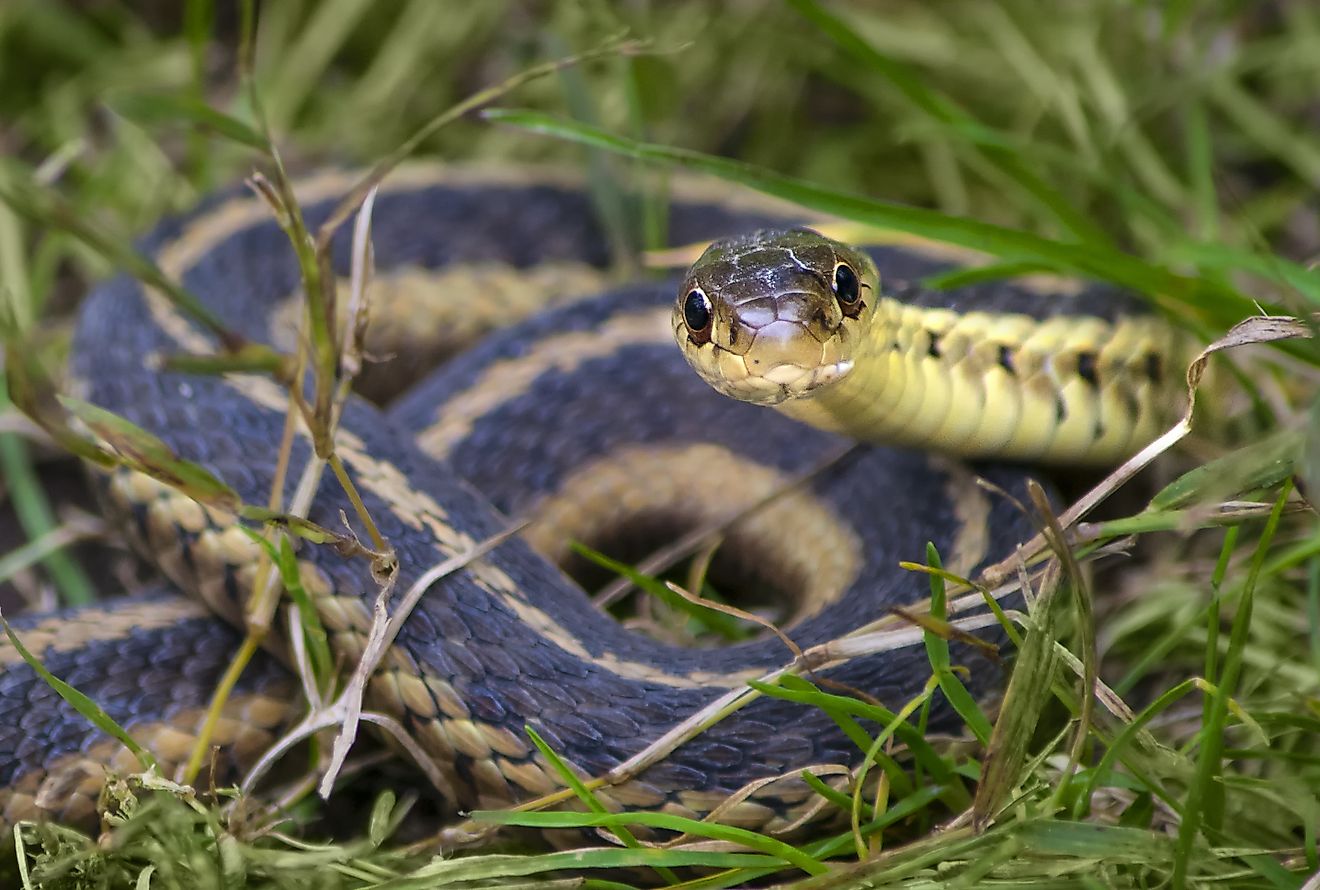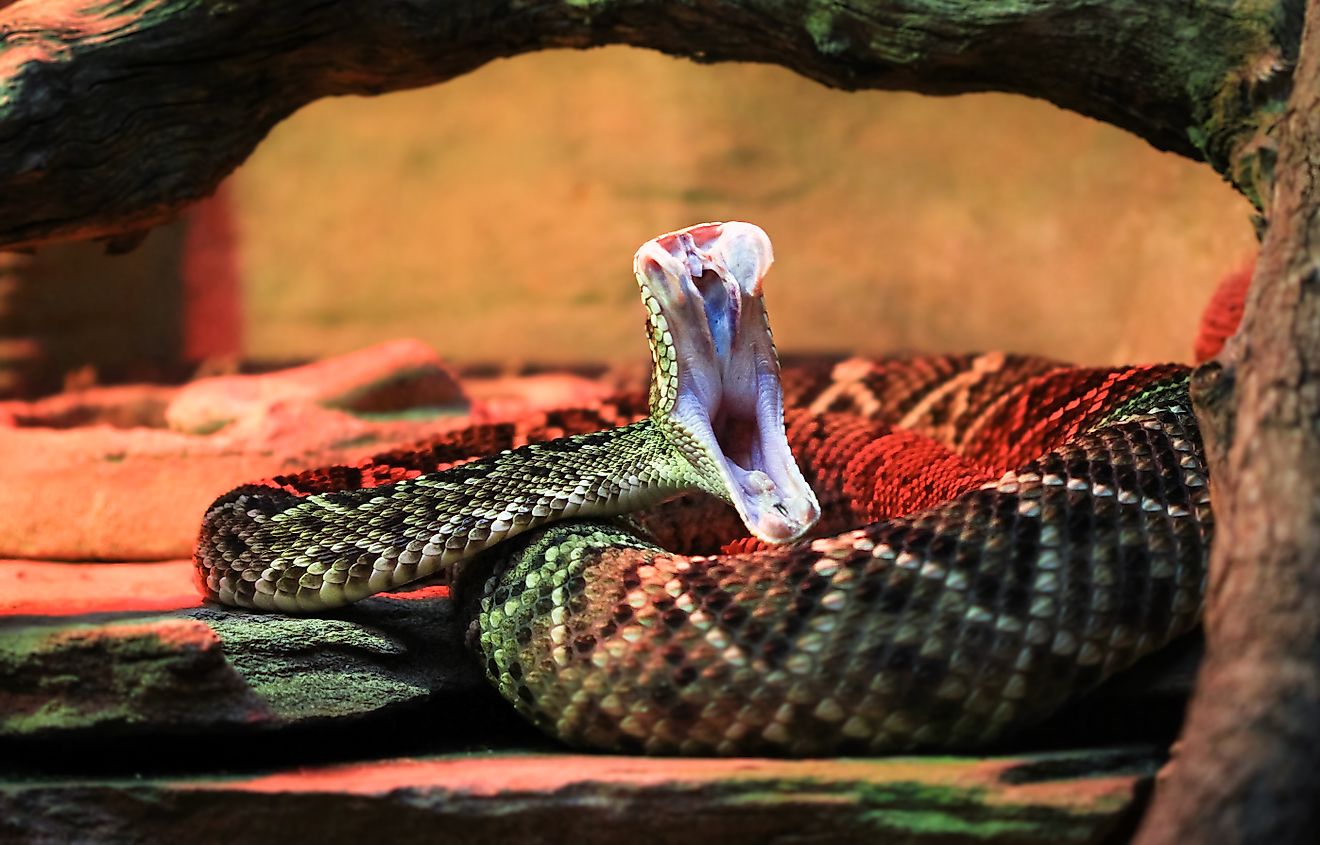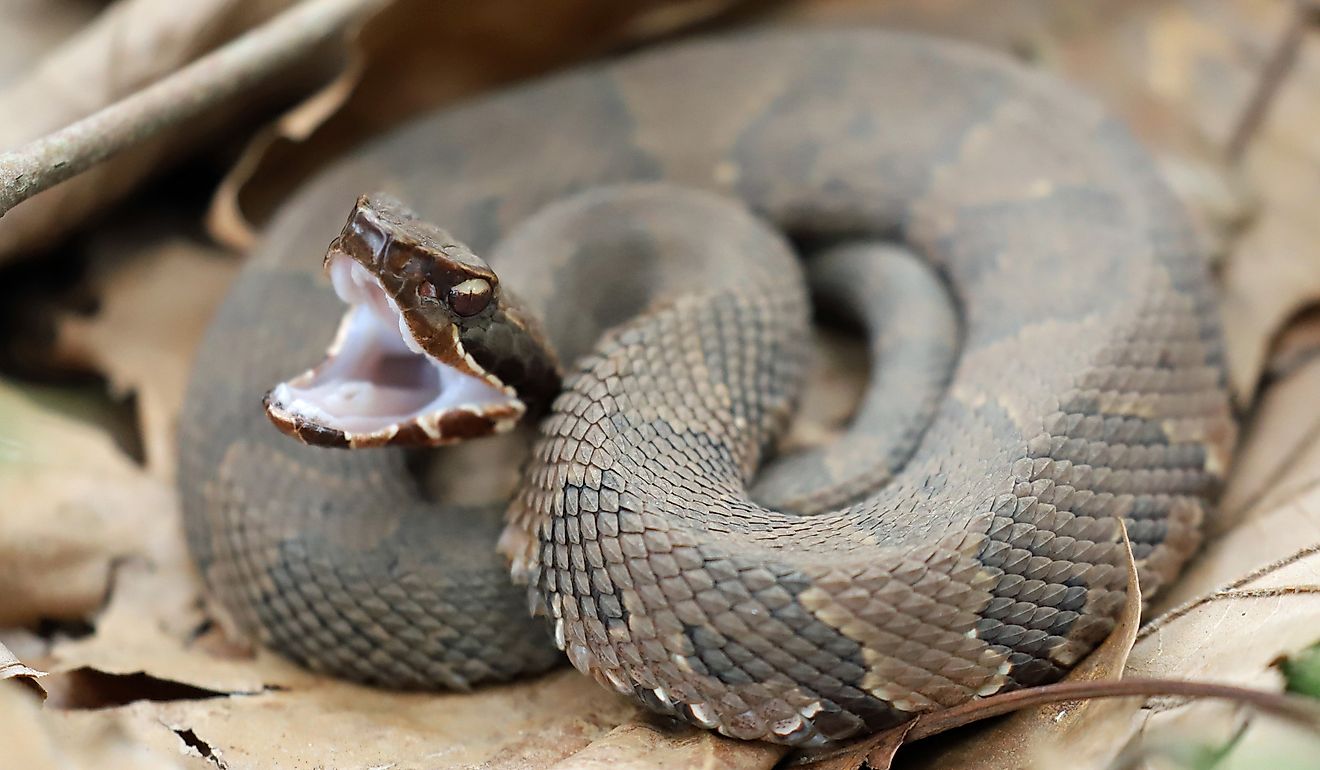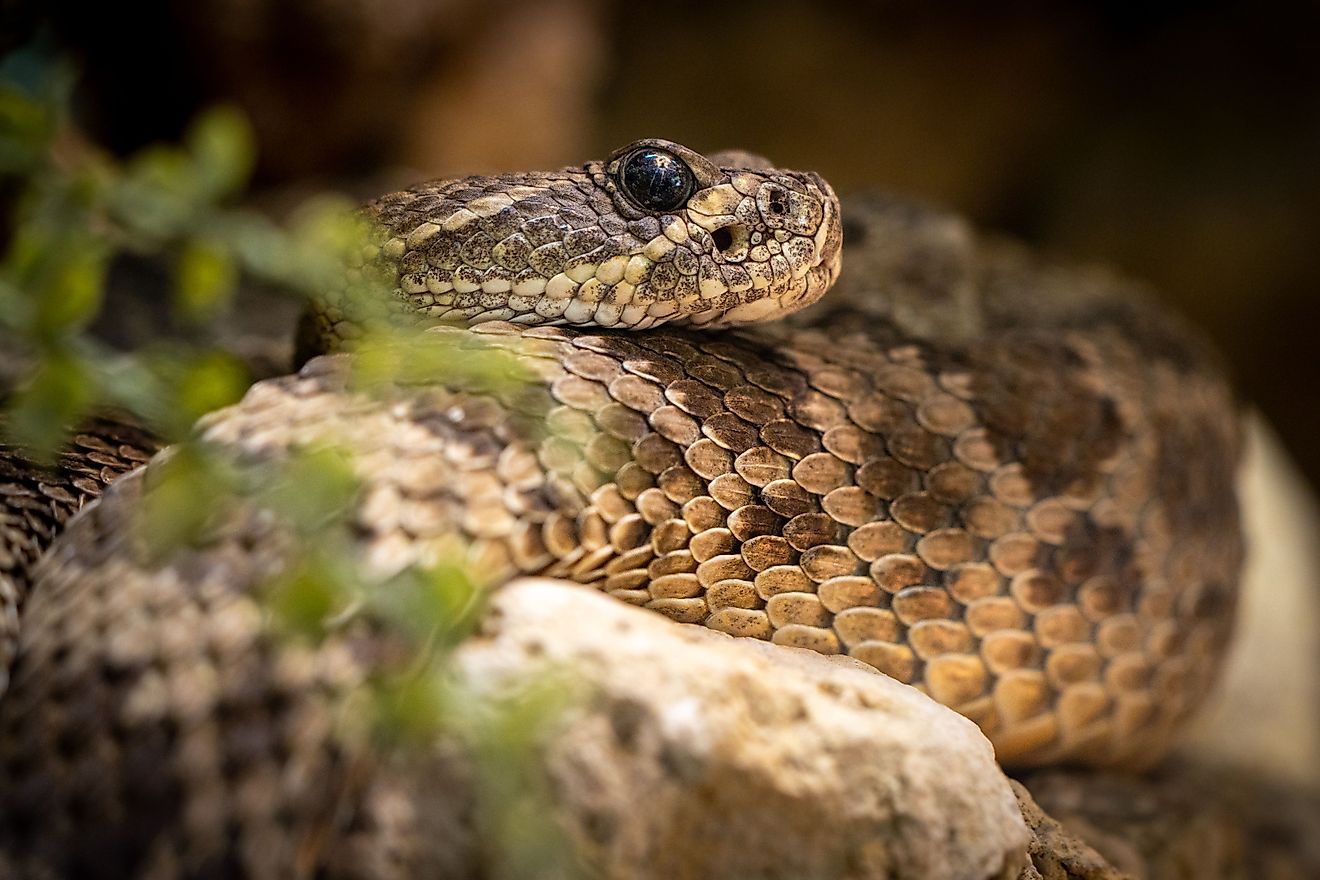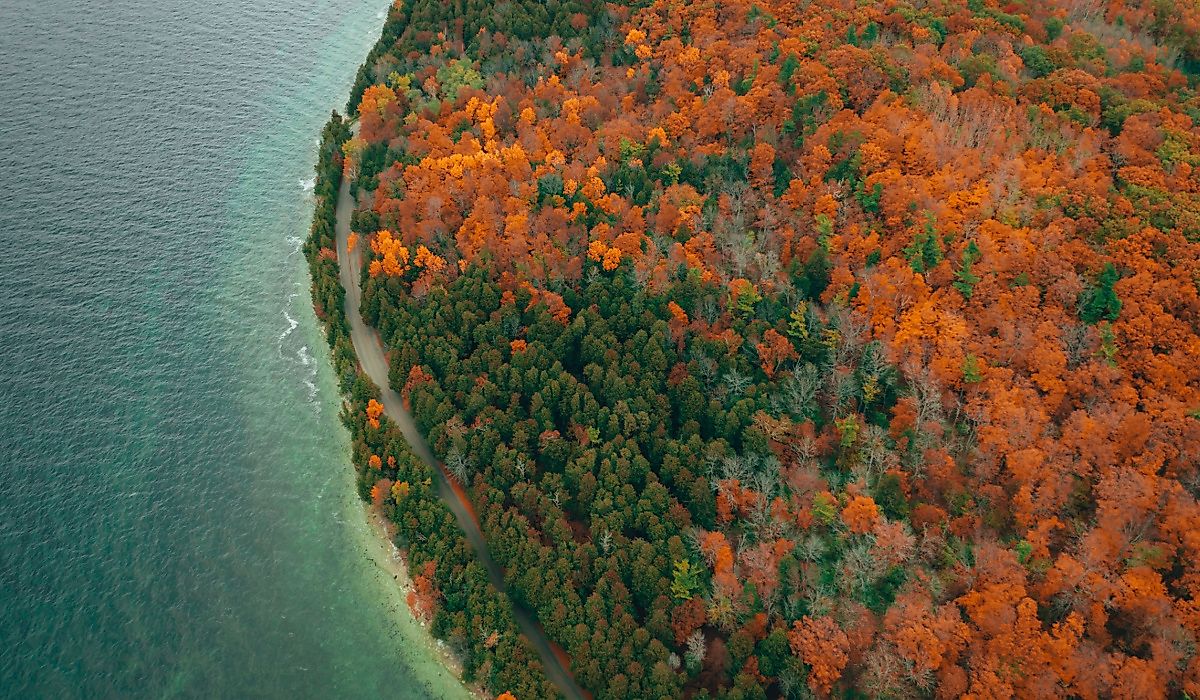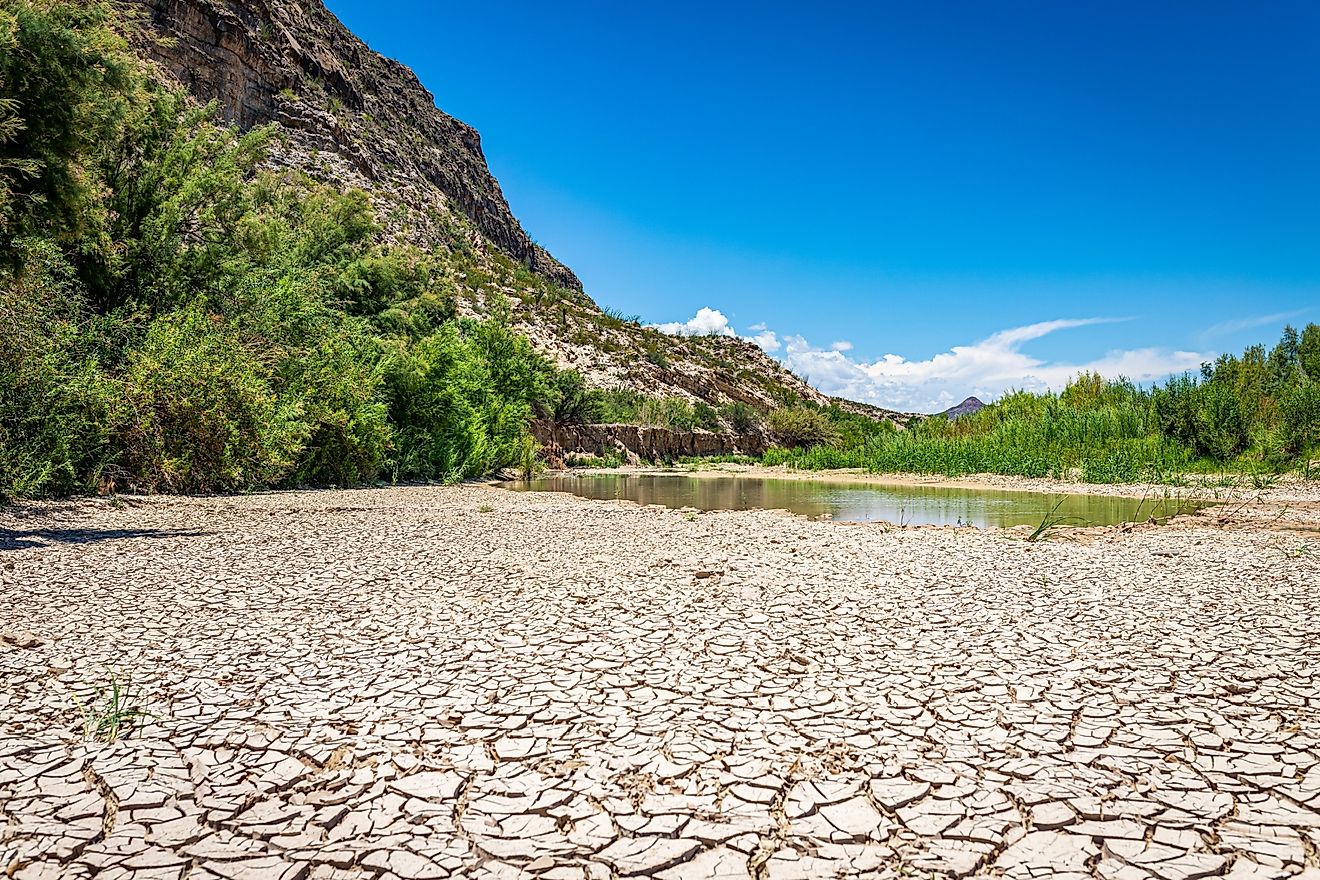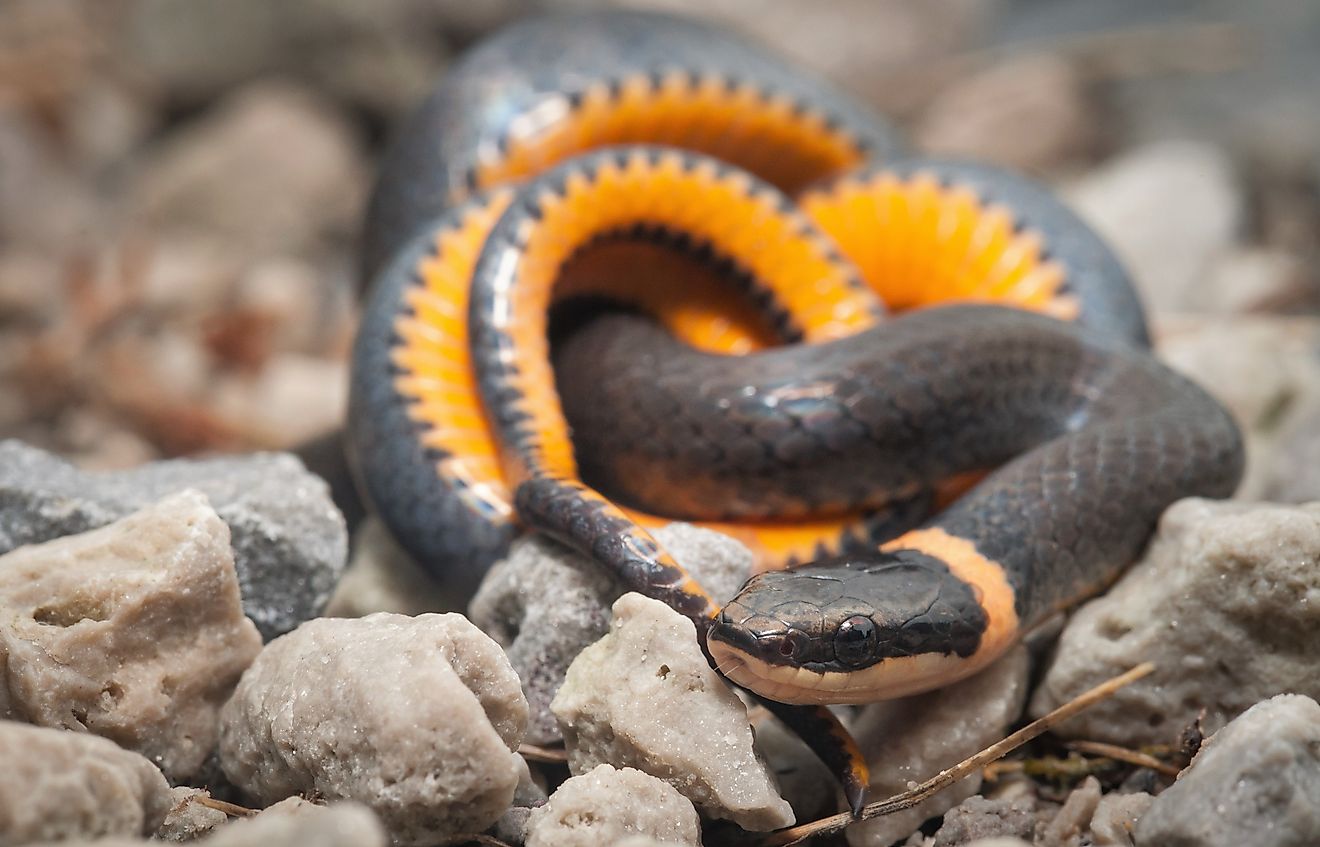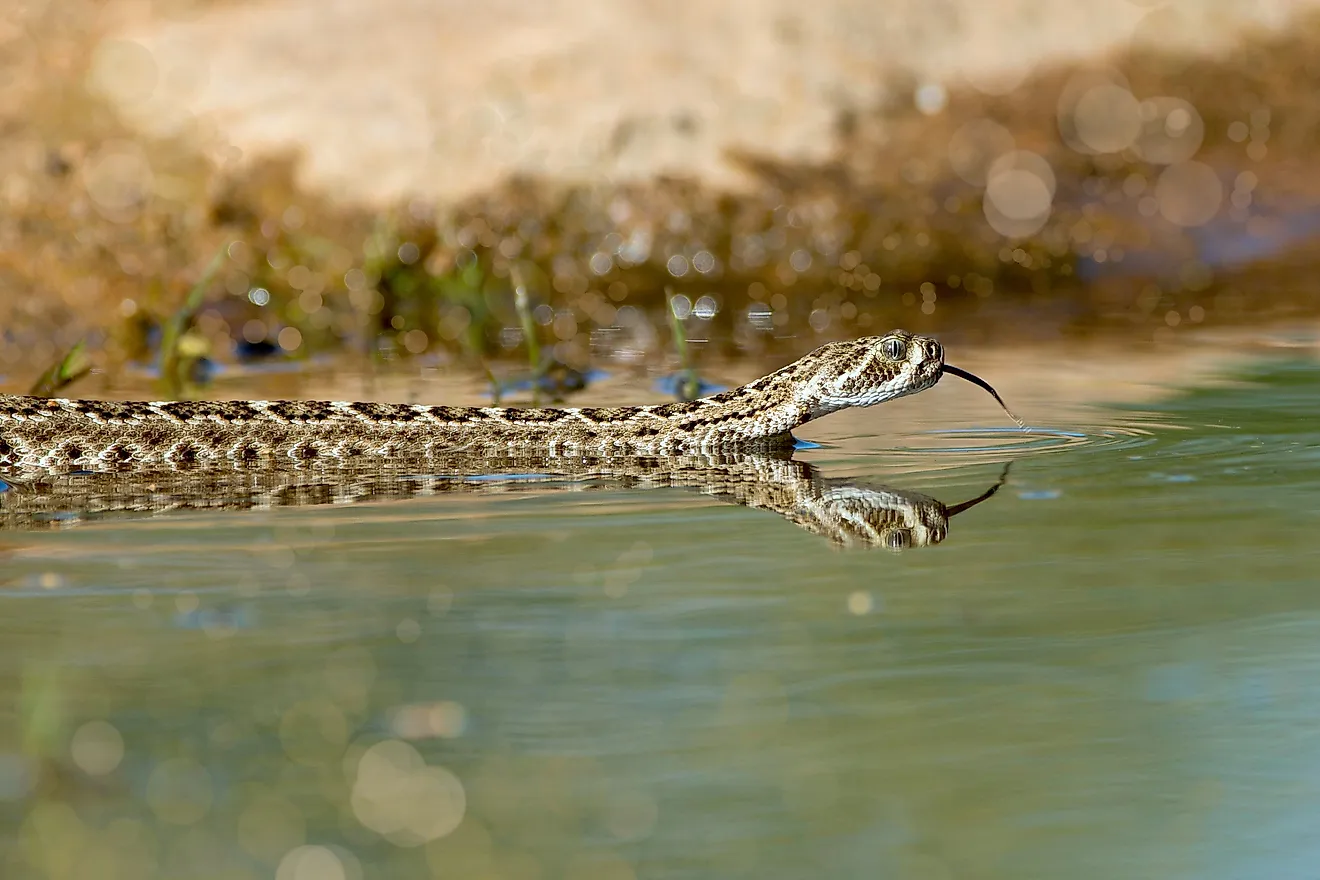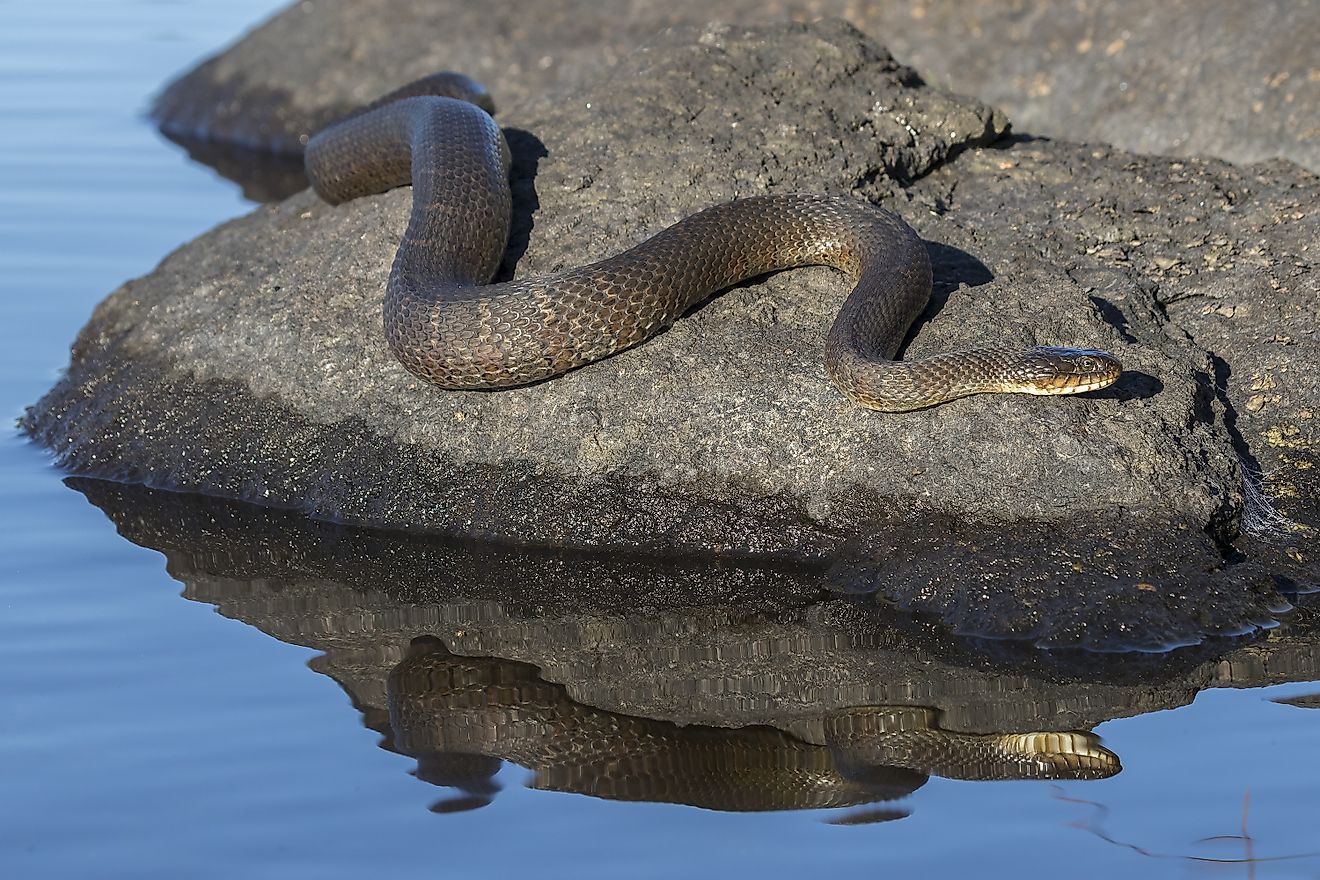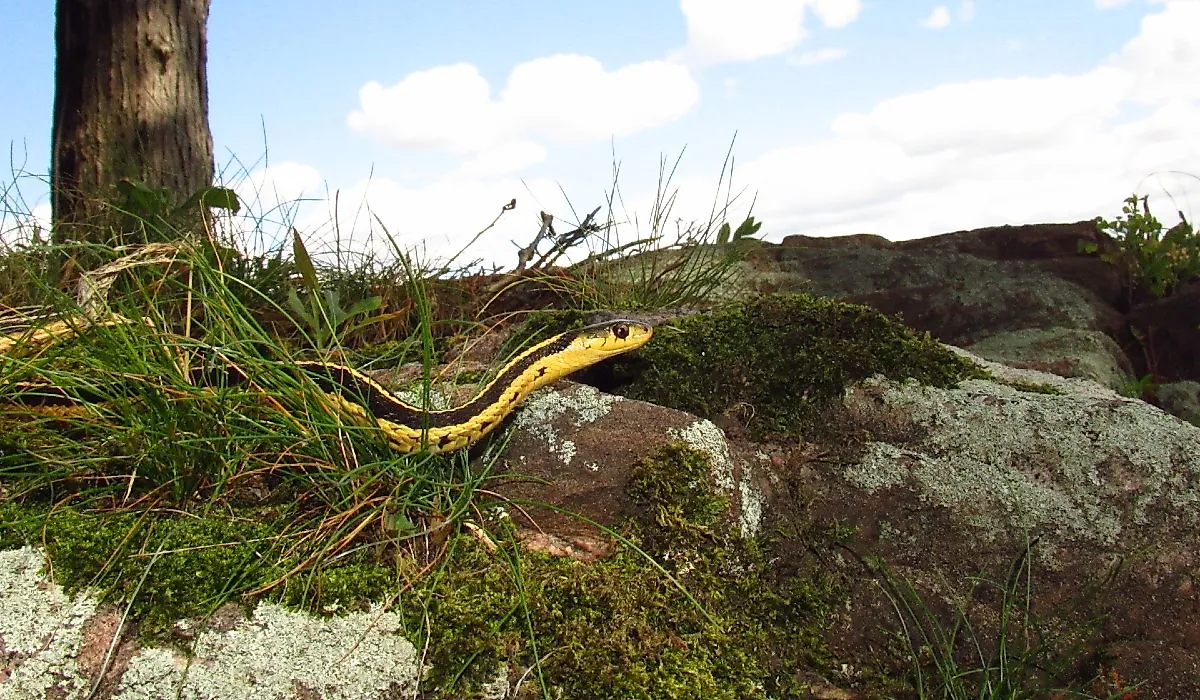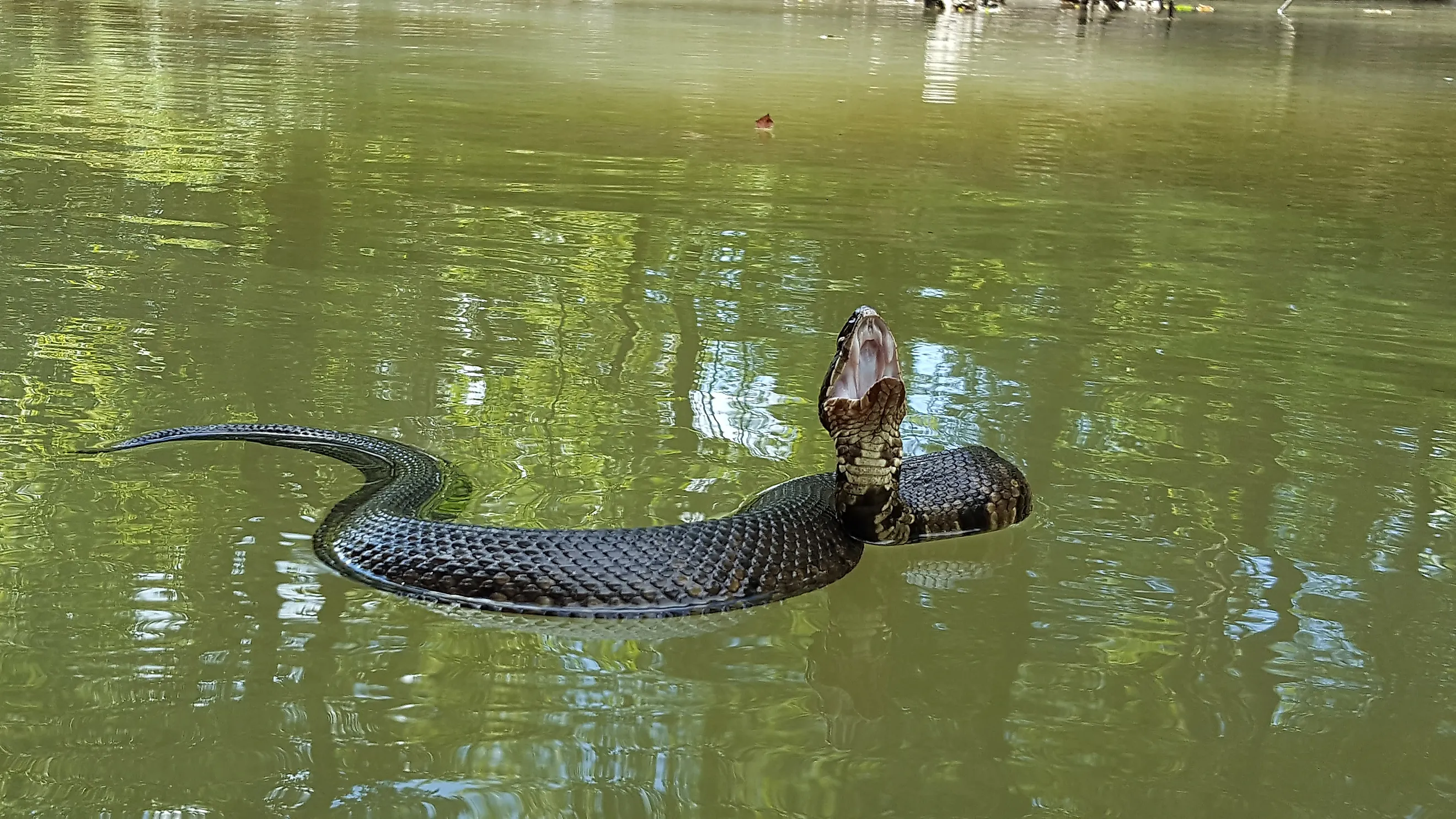
The Most Snake Infested Rivers In Alabama
Alabama is a state with a landscape of rolling forests, winding rivers, murky swamps, and vast wetlands, one of the most biodiverse in the United States. With more than 132,000 miles of rivers and streams, spending time outdoors by the water’s edge is a favorite pastime here. Along with a diverse population of birds, Alabama is home to upwards of 40 species of snakes that thrive in habitats ranging from pine woods to cypress swamps. Around the water’s edge, you’re most likely to see a cottonmouth, banded water snake, brown water snake, or plain-bellied water snake slipping through the shallows or basking on a log, perfectly at home in one of the four most snake-infested rivers in Alabama.
Mobile-Tensaw River Delta

Often referred to as “America’s Amazon,” the 250,000-acre Mobile-Tensaw River Delta is where the Mobile and Tensaw Rivers meet and spread out into a maze of swamps, bayous, and marshes before reaching Mobile Bay. The delta is a haven for Alabama’s diverse wildlife population, with about 70% of the state’s species of reptiles and amphibians calling it home, including more than 40 species of snakes.
One of the best ways to explore this incredibly biodiverse hotspot is to take a guided airboat eco-tour through its twisty bayous and cypress swamps with Airboat Express, where you’ll glide through bayous draped in Spanish moss, with the chance to spot alligators, turtles, herons, and, of course, snakes along the water’s edge. Of all the aquatic snakes found in the delta, the only venomous one is the cottonmouth, commonly referred to as a water moccasin, which will usually slither away before you can spot the telltale white interior of its mouth.
Tombigbee River
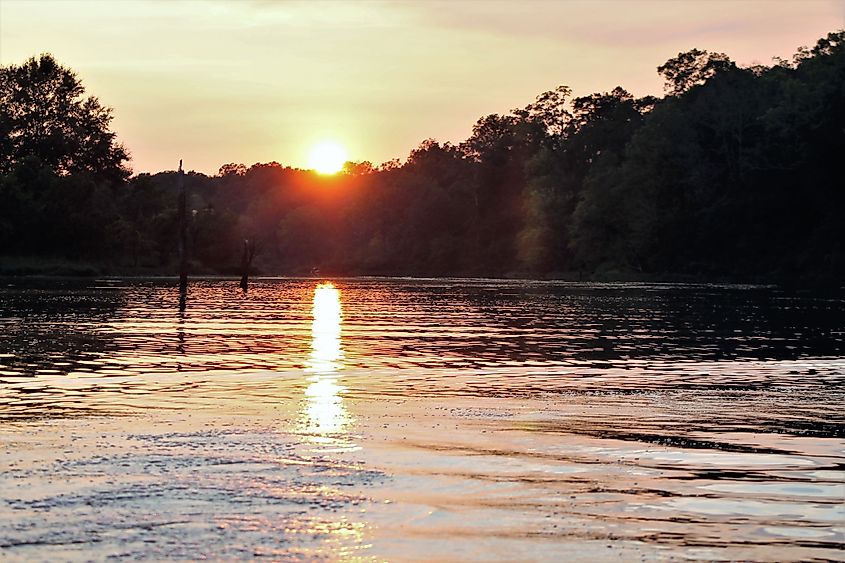
The Tombigbee River begins near Amory, Mississippi, and flows south through western Alabama before joining the Alabama River north of Mobile to form the Mobile River. On the west bank of the Tombigbee River, birders, anglers, wildlife photographers, and outdoor enthusiasts can explore the Choctaw National Wildlife Refuge, a 4,218-acre complex of wetlands, oxbow lakes, hardwood forests, and backwater sloughs. The refuge was founded primarily to protect the wood duck, where up to 200 broods hatch annually.
The refuge is not just a haven for birds, but also for alligators, otters, and several species of snakes, including cottonmouths, rat snakes, and garter snakes. All but the cottonmouth are non-venomous and will keep to themselves, but you’ll spot them most often on warm, calm days while boating, fishing, or paddling, basking near the shorelines.
Alabama River
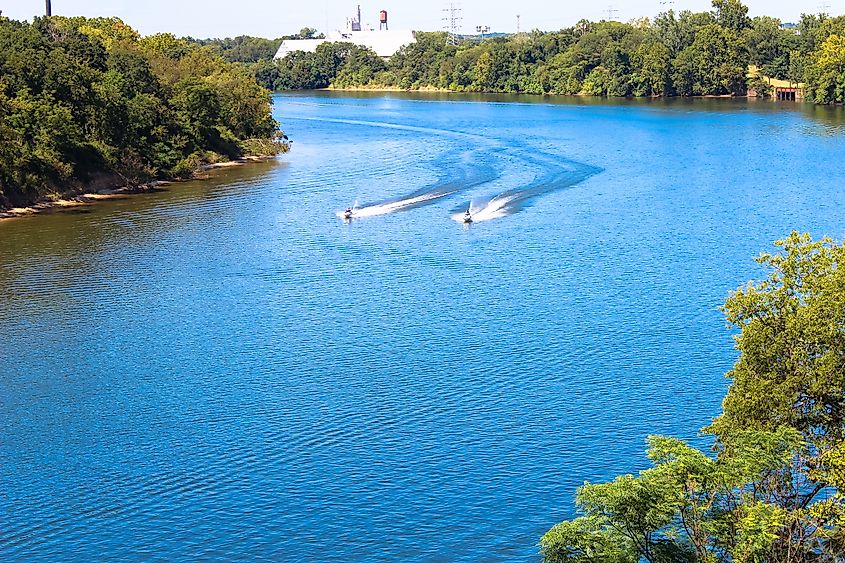
Considered the heart river of the state, the Alabama River is formed by the confluence of the Coosa and Tallapoosa rivers north of Montgomery at the Fall Line. The best way to experience both adventure and wildlife along the Alabama River is to launch your kayak or other watercraft from Montgomery Riverfront Park's public boat ramp. Once you start paddling downstream past the city center, keep your eyes peeled for herons, turtles, and water snakes along the banks of the river.
The park is part of the Alabama Scenic River Trail (ASRT), which features a wide range of waterways, rapids, streams, and lakes, offering numerous outdoor recreation opportunities where you can see a variety of wildlife, including snakes. The Alabama River is home to a large number of fish, which makes it an attractive feeding ground for snakes, such as the banded water snake and the venomous cottonmouth.
Cahaba River

The Cahaba River is the main tributary of the Alabama River, starting near Birmingham. It is the state’s longest free-flowing river, and a paradise for kayakers, nature lovers, and reptile watchers alike. The Cahaba River is 194 miles long and one of the most biodiverse waterways in North America. The river is also a top destination for fishing, swimming, paddling, and eco-tourism, especially in the spring when the famous Cahaba lilies cover sections of the river in white blooms in the Cahaba River National Wildlife Refuge.
Residents and tourists alike use the refuge as a starting point for exploring the riverside, where outdoor enthusiasts discover over 6.5 miles of hiking trails. One of the most popular hikes in the refuge is the Piper Trail, which traverses a former railroad bed with two overlooks that provide spectacular views of the river. The sanctuary supports a wide variety of wildlife, including the northern water snake.
Sharing the Rivers with Alabama’s Snakes
Alabama’s rivers flow through some of the most biodiverse habitats in the country, where snakes, birds, and alligators thrive side by side. While you need to exercise caution along the river, especially when it comes to the venomous water moccasin or cottonmouth, there’s nothing to stop you from enjoying activities like taking an airboat tour on “America’s Amazon,” dropping a line in the Tombigbee, paddling along the Alabama River, or hiking on trails beside the state’s longest free-flowing waterway, the Cahaba River. Together, these four snake-infested rivers in Alabama reveal the wilder, more beautiful side of the Yellowhammer State.
